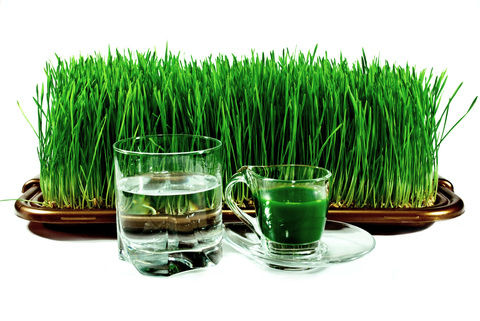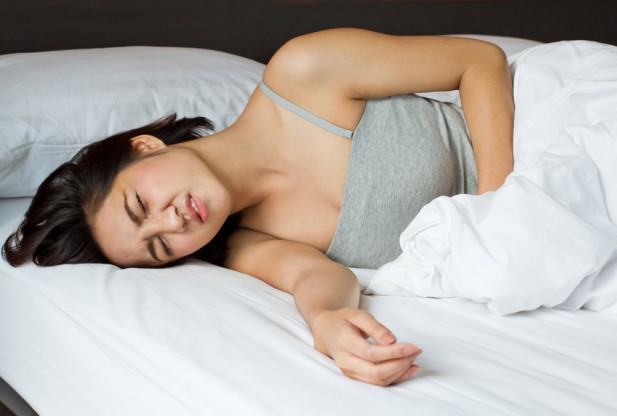Buying Guide & Tips
Wheat Grass benefits can either be experienced by keeping a tray of fresh Wheat Grass in your house that you cut and juice with a special juicer, or by buying specially dried or frozen Wheat Grass from a grower who grows it outdoors for months before harvesting.
In either case, be sure that your Wheat Grass is not grown with pesticides or chemicals of any kind. Also make sure that there are no algae like Spirulina or Chlorella mixed in because those lower the alkalinity of the product, reducing your Wheat Grass benefits.
You can get Wheat Grass trays from most health food stores or you can get growing kits online to grow your own.
In either case, you’ll need a specialized juicer that is designed for grasses. Simply search on your internet browser for “Wheat Grass Juicer”, or click on the link in the right hand column for the one we use.
If you have issues with tray grown grass, or just don’t have the time to juice it yourself, there’s a link to the right too for the best wheat grass powder I’ve found.
My Own Experience…
I grow our own wheatgrass in trays at home in order to get wheat grass benefits. When we started doing this, I worked up to drinking 8 ounces of juice per day in about a week.
In the beginning, I loved the taste and the effects. I had more energy and less all around pain and fatigue. I even started losing less hair!
But then I had to stop (Jeff didn’t). After about 3 months, my body just couldn’t take it anymore.
I tried alternating days, I took 2 days off every week during the 3 months, I lessened my dosage… but nothing stopped me from wanting to hurl just smelling it.
And then the positive wheat grass benefits went away too.
What we realized was that the high amounts of sugars in the wheatgrass, along with developing an allergy to the small amounts of mold on it, were causing my symptoms.
If you have an issue with sugar, like being diabetic or pre-diabetic (or even just sensitive to it because of Candida) I wouldn’t recommend tray grown grass.
If you have any allergies to mold, I also wouldn’t recommend tray grown grass. As we learned, even when you have so little mold that you can’t see it (like us), you’ll still have reactions if you have, or develop, allergies to it.
Jeff however, still receives wheat grass benefits by drinking 8 ounces a day almost a year later, and in fact notices a difference in hip joint issues and all over flexibility when he has to cut back. (Like when we aren’t getting near as much juice from the trays as we expect, which happens on occasion.)
So you can see how different people will react differently to anything. There is no one true way to perfect health.
On that note, I do take wheat grass powder every day in order to still get my wheat grass benefits. I don’t know if I’m getting as many minerals as I was with the tray grown (because we use ocean water to grow it), but I am getting at least some of them.
In the right hand column is a link to the best wheat grass powder I’ve found. It’s organic, grown in the ground over the winter and processed without high heat so all of the nutrients are intact. It tastes good too.
Dosage:
All remedies listed below have the same dosage instructions. To fully experience Wheat Grass benefits, it is best to follow these instructions to be sure you won’t have harsh reactions.
Juicing from a tray:
- Begin with a half ounce (half a shot glass) of Wheat Grass juice on your first day on an empty stomach.
- If you don’t have negative reactions, go ahead and increase your dosage to one ounce per day for a few days to a week.
- Slowly increase your dosage to 2 to 3 ounces per day spread throughout the day between meals.
Therapeutic Doses to Increase Wheat Grass Benefits:
If you’re using wheatgrass to recover from chronic illness like chronic fatigue, fibromyalgia, candidiasis, etc., work your dosage up to 8 to 10 ounces per day, spread out over the course of the day.
You can do 2 ounces 4 times a day or 4 ounces 2 times a day (or anything in between – whatever works for you), but don’t drink it all at once – it may come right back up!
I also recommend taking one day off per week to allow the body to rest and to help prevent your body from becoming allergic to the wheatgrass.
Caution: Those who are sensitive to mold and simple sugars should not drink Wheat Grass juice from a tray. You should get your Wheat Grass benefits from farmed products.
What some call “cleansing reactions” may in fact be a reaction to mold growth that naturally happens in tray grown Wheat Grass.
If you are taking dried powder or pills, follow the instructions on the label.
Conditions This Remedy Treats:
(Clicking on the name of underlined conditions below will take you to the page that discusses the causes and other remedies for that particular condition.)
Allergies
There are many anecdotal reports of those who take a regular dose of Wheat Grass and have a significant reduction in allergies. This is due to the high amount of Chlorophyll that acts as an anti-inflammatory and the serious immune boosting nutrients, enzymes and amino acids contained in Wheat Grass.
Anemia
Studies in animals have shown that Chlorophyll, which is abundant in Wheat Grass, normalized their red blood cell count over a period of 3 to 5 days, even in the animals that were severely anemic.
Bad Breath (Halitosis)
Wheat Grass benefits bad breath by helping to cleanse your body of some of the toxins and bacteria that cause it – this includes the bacteria in your mouth that are known to cause halitosis.
Burns
The Chlorophyll found in Wheat Grass benefits burns by helping them not only to heal faster, but by relieving some of the pain associated with them as well.
This can be done by juicing the Wheat Grass and making a poultice out of it. Simply soak a cloth in some Wheat Grass Juice and gently apply it to the burned area of the skin.
Taking a regular dose of Wheat Grass internally will also boost your immune system, helping your skin heal faster.
Candida
Wheat Grass benefits those with Candida only if it is from an outdoor source and not from a tray.
Wheat Grass from a tray has too many simple sugars in it (not to mention the likelihood of mold) and will agitate your symptoms and feed Candida fungus making it worse.
Please read the General Properties section to learn more about the important difference between tray grown and farm grown Wheat Grass.
Cancer
Studies have shown that the high amount of Chlorophyll in Wheat Grass can slow down the metabolic activity of cancer causing substances.
The amazing amount of nutrients, enzymes and amino acids also gives your immune system the ammunition it needs to fight cancer cells in your body.
The Chlorophyll also oxygenates the blood and brings oxygen to the cancer cells, which they don’t like at all.
Additionally, Chlorophyll will create a more alkaline environment that the Cancer cells won’t tolerate.
Colds & Flu
Wheat Grass benefits your immune system by giving you most of the nutrients, enzymes and amino acids it needs to fight off bacteria and virus alike. Taking a regular dose of Wheat Grass daily can keep you from getting those nasty “bugs” that keep going around.
Fatigue
Another Wheat Grass benefit is that it will give you a boost of energy similar to coffee or sugar but without the negative side effects.
In helping overcome Chronic Fatigue, Wheat Grass contains high amounts of Saponin which cleanses the lymph system and detoxifies the body by removing built up toxic solids like hardened mucous, acids and fecal matter. These are all things that can contribute to Chronic Fatigue.
Skin Rejuvenation
One of the Wheat Grass benefits is that it is full of healthy enzymes, nutrients and amino acids, it is a wonderful skin rejuvenator.
Pour a few ounces of Wheat Grass juice or powder into a warm bath and soak for 20 minutes. Your skin will feel wonderful when you are done.
Weight Loss
The amount of nutrients in one ounce of Wheat Grass is said to equal 2 pounds of fresh vegetables. That combined with the high natural starch content will give your brain the signal that you no longer need to eat. This can lower the need for snacking or over eating for some people.
General Properties:
Wheat Grass is the beginning stage of the common wheat plant. It grows in three basic stages – sprout, vegetable, and grain. Both the sprout and vegetable stages are commonly called Wheat Grass, but those two stages are very different from each other.
In the sprout stage, which is the stage Wheat Grass is in when grown in an indoor tray, the grass is still very nutritious and many people do very well on it. The sprout stage containssimple sugars however that some people cannot tolerate such as Diabetics or those with Candidiasis (Candida overgrowth).
Another drawback to tray grown Wheat Grass is the mold.
Now, many people will tell you that if you just cut above the “mold line”, you’ll be fine, and that the mold itself isn’t toxic anyway. That’s not true for everyone.
The problem with a general statement like that is that some people are very allergic to any kind of mold and can go into anaphylactic shock very easily.
As far as the “mold line” is concerned, you are playing roulette if you are sensitive to mold because the mold can grow itself into the grass leaf, thus ending up in your juice no matter how high you cut it.
Mold is simply a fact of life in any kind of farming, but because the seeds in the trays are so packed together (unlike a field outdoors would be), the mold spreads to the sprouts and isn’t killed by natural sunlight or frost the way it would be outdoors.
The solution to these issues (simple sugars and mold) would be Wheat Grass that grows outdoors in fields.
When wheat is planted outdoors, the seed is spread apart so that any mold from seeds that don’t sprout would never touch sprouted seed. Also, these farms grow their Wheat Grass over the course of about 4 months during the winter.
A few things happen when this is done. The sun is hitting the sprouts and not only kills any mold that might be there, but also increases the Chlorophyll content of the finished product. (You’ll notice how dark green field grown grass is compared to tray grown.)
Another thing is that the winter frost and snows finish off any mold that might remain and temporarily stops the upward growth of the sprout. The roots then spend the winter months digging ever deeper for nutrients that end up in your finished Wheat Grass, giving it a higher mineral content than tray grown grass.
The third important difference in farm grown Wheat Grass is the sugars.
When the snows and frosts go away, the plant starts growing upward again, and just before the stage called the “jointing stage”, it turns from a sprout into a vegetable.
The simple sugars are all transformed into complex carbohydrates, making it safer for Diabetics and Candida sufferers (and anyone else who has issues with simple sugars) to consume. It is at this “magic” moment that farmers harvest the Wheat Grass.
Tray grown grass will never reach the vegetable stage no matter how long you grow it; it will always fall over and die before that can happen.
Another difference between the tray grown and field grown Wheat Grass is the taste. Because the simple sugars are no longer there, the sweet taste is gone, replaced by a more “earthy” vegetable taste. The bitter aftertaste is also gone which is from the mold in tray grown grass.
Most farms only sell the powdered or pill form of their product, but there are a couple of farms that flash freeze the juice and either sell it directly to you or through your local health food store in the freezer section.
You can search through your internet browser for “Wheat Grass juice farms” and find one that fits your needs.
Possible Side Effects:
The side effects of Wheat Grass are usually called cleansing reactions. This may be the case for some people.
The caution here is that some side effects are being caused by a sensitivity to mold or to the simple sugars of tray grown grass. The difference between the two are:
Detox symptoms include a general aching body, slight headache and fatigue or lack of energy – they may take a few hours to a day to manifest.
Mold sensitivity symptoms include stomach cramps, nausea, severe headache, vomiting and/or diarrhea – they generally manifest within 15 minutes after taking the Wheat Grass.
To avoid mold side effects, get your Wheat Grass benefits from products that were grown on a farm outdoors.
Drug Interactions:
As far as we can tell, there aren’t any known interactions between Wheat Grass and pharmaceuticals.
Did You Know…?
- Wheat Grass benefits have been enjoyed for many thousands of years – as far back in time as 5000 B.C. by the Egyptians and early Mesopotamians.
- In 1930, a man by the name of Charles F. Schnabel started popularizing the benefits of Wheat Grass in the Western culture. He also performed numerous studies on it.
- Wheat Grass contains high amounts of Vitamins A, B and E as well as many minerals, enzymes, amino acids and phytonutrients.
- Chlorophyll (the “blood” of plants), found in abundance in Wheat Grass, is almost identical in structure to the hemoglobin in your blood. In fact, the only difference is that Chlorophyll contains a magnesium molecule rather than an iron molecule in its nucleus.
- Wheat Grass juice is considered a pre-digested food. This means that your body doesn’t need to use any of its own enzymes to digest it, making it very easy on your organs.
- Wheat Grass juice is considered a “perfect food” by many enthusiasts and experts because of its complete nutrient profile.
- Although Wheat grain is very acidic, Wheat Grass is a very Alkaline food, which is great for you body. This helps oxygenate your blood and it gives you energy.





